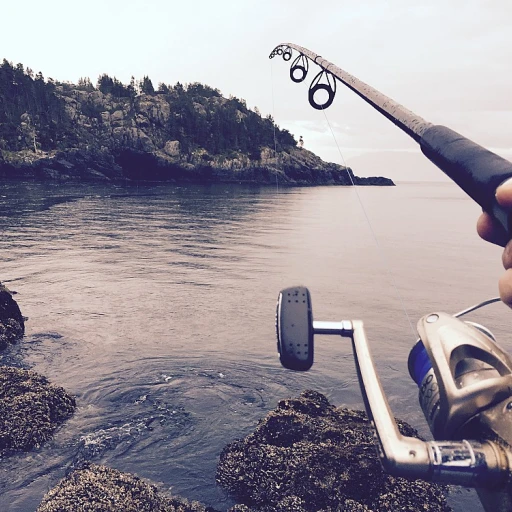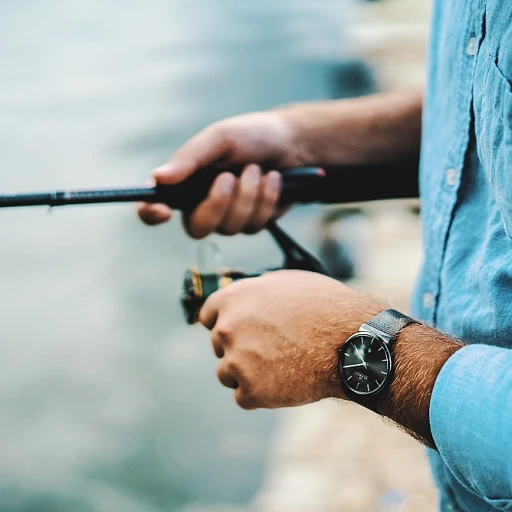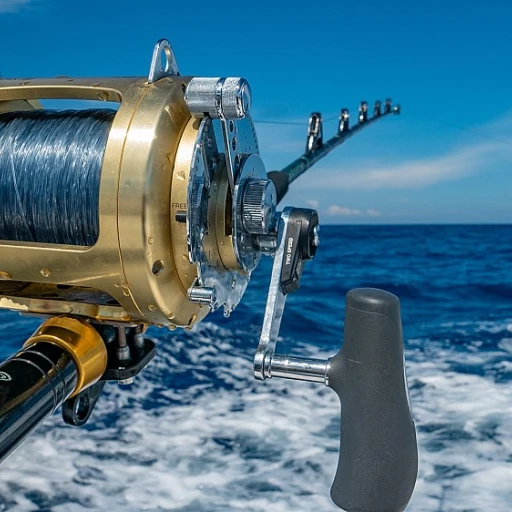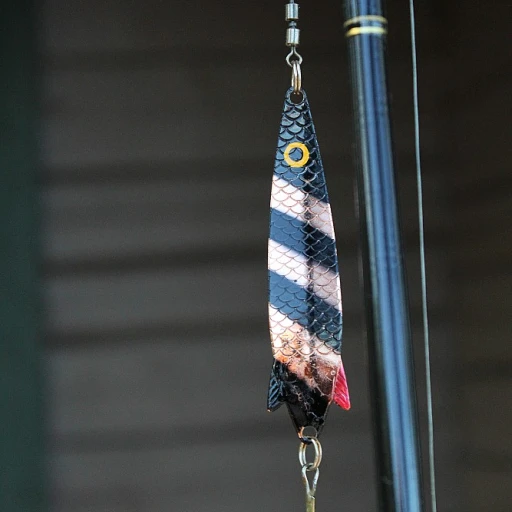The largest tuna ever caught: an overview
The biggest tuna ever: an overview of record-breaking catches
In the world of sport fishing, the thrill of hooking a giant tuna remains unparalleled. The largest tuna ever caught was a bluefin tuna, weighing a staggering 1,496 pounds (678.58 kg). This immense fish was brought in by Ken Fraser off the coast of Nova Scotia, Canada, on October 26, 1979. This record-setting catch has yet to be surpassed, illustrating the immense size and strength of these ocean giants.
The pursuit of the largest tuna
Bluefin tuna, known scientifically as Thunnus thynnus, are remarkable for their size, speed, and power. Their exceptional physical traits make them a prized target for sport fishers and a valuable commodity in the global fish market. The biggest tuna attract anglers from all over the world, all seeking to beat Fraser's long-standing record.
A legendary catch
Ken Fraser's epic battle with the giant bluefin tuna off Nova Scotia is a story etched in the annals of fishing history. Using a rod and reel, Fraser secured his place in the fishing community by landing the largest bluefin tuna ever caught. This near-mythic fish remains the gold standard by which all other record attempts are measured.
The International Game Fish Association (IGFA), which keeps the official records for sport fishing catches, still recognizes Fraser's catch as the heaviest Atlantic bluefin tuna ever recorded. For those passionate about numbers and facts in fishing history, this stands as a monumental achievement.
Read more about legendary catches to fuel your passion for sport fishing.
Bluefin tuna: the giants of the ocean
Bluefin tuna: the giants of the ocean
Understanding the Bluefin Tuna
Bluefin tuna, known for their incredible size and strength, are the largest of the tuna species. These oceanic giants belong to the genus Thunnus, with the Atlantic bluefin (Thunnus thynnus), Pacific bluefin (Thunnus orientalis), and Southern bluefin (Thunnus maccoyii) being the prominent ones. The Atlantic bluefin tuna, in particular, can weigh up to an astounding 1,500 pounds or more, making them a prized catch in sport fishing circles.Characteristics of Bluefin Tuna
Bluefin tuna possess remarkable speed and agility, capable of reaching speeds up to 43 miles per hour. They are recognizable by their streamlined bodies, metallic blue top and silver belly, which helps them camouflage in the open ocean. These features also make them formidable predators in the marine food web.Historical Records
The largest Atlantic bluefin tuna ever recorded was caught off the coast of Nova Scotia by Ken Fraser in 1979, weighing in at a staggering 1,496 pounds. This record has stood the test of time for over four decades and remains a benchmark for tuna fishing enthusiasts.Migration Patterns and Feeding Habits
Bluefin tuna exhibit extensive migratory behavior, traveling across the Atlantic Ocean from the Gulf of Mexico to the Mediterranean Sea, covering thousands of miles. They follow schools of smaller fish and crustaceans, such as crab and squid, which make up a significant portion of their diet. This migratory pattern exposes them to various fishing pressures and challenges conservation efforts.Popular Fishing Techniques
Catching a giant bluefin tuna requires specialized skills and equipment. Anglers often use heavy-duty rods, reels spooled with high-pound test lines, and tackle capable of handling the immense strength of these fish. Techniques like trolling, where lures are dragged behind a moving boat, and chumming, where bait is thrown into the water to attract tuna, are commonly employed.Bluefin Tuna in the Fish Market
Bluefin tuna are highly valuable, especially in the sushi and sashimi markets in Japan. A single bluefin tuna can fetch hundreds of thousands of dollars at auctions, with the highest recorded sale being a Pacific bluefin tuna sold for $3.1 million in Tokyo's Tsukiji fish market. This high demand, paired with overfishing concerns, has led to significant conservation efforts to protect these majestic creatures.Conservation Efforts and Challenges
Due to their popularity and overfishing, bluefin tuna populations have faced significant declines. The International Union for Conservation of Nature (IUCN) lists all three species of bluefin tuna as threatened, with the Atlantic bluefin classified as endangered. Organizations such as the International Game Fish Association (IGFA) and various marine conservation groups continuously work to promote sustainable fishing practices and protect bluefin tuna populations.The Future of Bluefin Tuna
Conservation efforts offer hope for the future of bluefin tuna. By imposing stricter fishing quotas, protecting spawning grounds, and raising awareness about the importance of sustainable fishing, there is potential to preserve these incredible giants for generations to come. Continued research and cooperation between nations are crucial in ensuring the long-term survival of bluefin tuna in our oceans. For more stories on record-breaking catches and expert tips, check out our blog post on the incredible journey of the world record lake sturgeon.Ken Fraser's legendary catch
Ken Fraser's legendary catch
The name that is synonymous with the biggest tuna ever caught is Ken Fraser. On October 26, 1979, off the coast of Nova Scotia, Canada, Fraser caught a giant bluefin tuna that set the bar in the fishing community. This massive catch, weighing an astonishing 1,496 pounds, remains the heaviest bluefin tuna ever caught and is officially recognized by the International Game Fish Association (IGFA) as the standing world record. (IGFA).
Fraser's monumental catch took place in a fishing vessel in the chilly waters of the Atlantic Ocean, where the wild nature of the sea meets the patience and skill of an experienced angler. This bluefin tuna, caught just off the shores of Nova Scotia, was more than just a massive fish; it embodied the epitome of sport fishing challenges and triumphs.
Details of the record catch
Ken Fraser's bluefin tuna measured 149.6 inches in length. The fight to reel in this mammoth fish lasted a grueling 45 minutes, showcasing Fraser's sheer determination and prowess. It's worth noting that this impressive feat was achieved using a mackerel as bait and a trusty rod and reel—common yet reliable tools employed in sport fishing. The weight of this tuna surpasses many heavyweights in the fishing community.
Expert insights
Some experts, like Anne Nuffer Hinze, note that the conditions of the Atlantic waters off Nova Scotia are prime for yielding giant bluefin tunas due to the rich forage base. The colder waters and abundant food sources make it an ideal hunting ground for these behemoth fish. Quoting Fraser, "It was a battle that I'll never forget, a true test of strength and resilience."
This area, part of the Gulf of St. Lawrence ecosystem, sees a significant population of enormous bluefin tunas thanks to these flourishing conditions. Key figures in sport fishing often emphasize that catching such a massive bluefin requires the perfect blend of expertise, patience, and a bit of luck.
Technology and techniques
The records of the largest tunas caught have often been aided by advancements in fishing technology and equipment. Techniques like trolling and the use of highly durable rods and reels have revolutionized sport fishing. Over the years, there have been numerous developments in fish tracking and baiting techniques, contributing to successful big catches like Fraser's record holder. Reel manufacturers now produce equipment that can handle the immense power of bluefin tunas, with some reels being spooled with line capable of handling weights over 100 pounds.
Fraser's 1979 catch remains an inspiration to anglers worldwide, showcasing that with the right mix of strategy, technology, and perseverance, landing a fish of a lifetime is indeed possible. For more information on the techniques used to catch such giants, check out this ultimate guide to flavorful cooking methods.
The role of the International Game Fish Association (IGFA)
Setting the standard in giant tuna fishing
The International Game Fish Association (IGFA) plays a crucial role in the world of sport fishing, particularly when it comes to verifying and recording monumental catches. This organization isn't just a random group of fishing enthusiasts; it’s an authoritative body that sets global standards and keeps meticulous records for all kinds of sport fishing feats. When it comes to the biggest tuna ever, the IGFA's role is indispensable.
The verification process
Every claim of a record-breaking catch is subjected to rigorous scrutiny by the IGFA. When Ken Fraser caught his legendary 1,496-pound Atlantic bluefin tuna off the coast of Nova Scotia in 1979, the IGFA meticulously verified this catch, making sure it met all their stringent criteria. The fish was weighed on an IGFA-certified scale, and the tackle used was inspected to ensure compliance with IGFA rules. Notably, Fraser's catch is still celebrated today as the largest tuna ever, nearly 50 years later.
Why the IGFA matters
The importance of the IGFA in maintaining the integrity of sport fishing records cannot be overstated. Without this body, disputes over the credibility of catches would be rampant. Consider, for instance, the scrutiny involved in verifying the massive yellowfin tuna caught near Cabo San Lucas, Mexico. Without IGFA’s strict protocols, this almost 400-pound catch might have gone unrecognized. For anyone interested in more stories about massive fishing tales, check out some incredible fish caught around the world.
Impact on fishing techniques and gear
The IGFA's rules and records have a ripple effect on how anglers approach their craft. Fishermen and manufacturers alike look to these records to innovate better tackle and refine techniques for landing these giant tunas. The IGFA's endorsement provides a stamp of legitimacy that can drive market trends and even affect the prices and desirability of certain types of fishing gear. A record bluefin tuna isn’t just a triumph for the angler; it’s also a marketing boost for the products used in the catch.
Standard-Bearers for future generations
As fishing technology and techniques evolve, the IGFA's role will be as crucial as ever in maintaining a level playing field. This keeps the competition fair and encourages responsible fishing practices. For avid anglers and aspiring record-holders, keeping abreast with the latest guidelines and records maintained by the IGFA can be as exhilarating as the catches themselves.
So, the next time you hear about a colossal tuna being hauled in, think of the IGFA and the meticulous process that ensures this catch is more than just a fish story.
Techniques and tackle for catching giant tuna
Techniques and tackle that stand out
When it comes to catching bluefin tuna, the giants of the ocean, specific techniques and specialized tackle play a crucial role. These large fish, known for their incredible strength and speed, require anglers to use advanced methods and robust gear to have a chance at landing one of these formidable ocean creatures.
Choosing the right tackle
The choice of tackle is critical in tuna fishing. For example, strong, heavy-duty rods and reels are non-negotiable when targeting largest tuna ever. The commonly used tackle includes 80- to 130-pound-class rods paired with high-capacity reels that can handle the massive pressure exerted by a giant bluefin. According to expert angler Ken Fraser, who caught the record bluefin in Nova Scotia, having your reel spooled with at least 1,000 yards of 130-pound-test line is essential to withstand the powerful runs typical of this species.
Effective bait and lures
Lure choice can make or break your fishing adventure. Live bait like mackerel or herring often entices large tunas, but seasoned anglers also rely on a variety of artificial lures. Topwater lures, jigs, and trolling lures are especially effective. Tuna are known to chase popping and skipping lures on the surface, offering an adrenaline-pumping sight for any angler.
Mastering different fishing techniques
Techniques vary depending on the fishing location. In the Atlantic, trolling is a go-to method, where boats drag lines with bait or lures at controlled speeds to attract thunnus thynnus (Atlantic bluefin). On the other hand, the Pacific region, especially around Japan and California, sees a mix of trolling and live bait fishing. Experts suggest that chumming with baitfish can effectively draw tunas closer to the boat, increasing the chances of a successful catch.
There's also a growing popularity in jigging among sport fishers. This technique involves rapidly jerking a weighted lure up and down to mimic the movement of an injured fish, which can prove irresistible to hungry tuna. According to a report by the IGFA, mastering such techniques can significantly improve your success rate when targeting trophy-sized bluefin.
Adapting to the environment
Understanding the environment is just as critical as the fishing gear and techniques. Bluefin tuna often frequent specific areas depending on the season, water temperature, and food availability. For instance, anglers in Cape Cod target these tunas during the summer months when schools move closer to shore. Similarly, the waters off the coast of Mexico and Brazil are known hotspots for giant bluefin during specific times of the year.
In conclusion, catching the largest tuna ever is a blend of the right tackle, effective bait, honed techniques, and a keen understanding of the fish's habits and environment. Seasoned anglers continually adapt and innovate, pushing the boundaries of what is possible in the thrilling sport of tuna fishing.
Notable tuna fishing locations
Hot spots for landing massive tunas
There are several widely regarded locations for big tuna fishing. These hotspots are known for producing some truly gigantic tuna, be it Atlantic bluefin, southern bluefin, or Pacific bluefin tunas. Each spot offers a unique experience for anglers seeking the adrenaline rush of hauling in one of these record-breaking giants.Prince Edward Island, Canada
No conversation about big tunas is complete without mentioning Prince Edward Island. Famous for its rich waters, this Canadian hotspot is renowned for producing sizable bluefin tuna. Open ocean conditions here are perfect, providing an ideal habitat for these hefty fish. Anglers from all over the world congregate here, hoping to break records or at least go home with an unforgettable story.Gulf of Mexico
The Gulf of Mexico is another prime location. This diverse marine environment sustains a variety of tuna species, including the mighty bluefin and yellowfin tuna. The Gulf's deep waters serve as a great proving ground for serious sport fishers looking to test their mettle against the ocean's fiercest inhabitants.Cape Cod, USA
Off the coast of Massachusetts, Cape Cod has long been a beloved spot for tuna fishing. The waters here are often swarming with schools of Atlantic bluefin tuna. Interestingly, it's in these waters that Ken Fraser set his famous record. Cape Cod remains a favorite local and tourist fishing destination, especially for those dreaming of a record bluefin tuna catch.New Zealand
Head down under for immense southern bluefin tuna. New Zealand's waters consistently yield large specimens, attracting anglers globally. The Southern Hemisphere's open sea presents an ideal challenge for expert fishermen looking to reel in a behemoth bluefin before sunrise.Japan
Renowned for its fish markets and tuna auctions, Japan is also a top location for catching some of the most massive bluefin tuna ever. The Pacific bluefin tuna, found in Japanese waters, often grows to impressive sizes, frequently breaking records. Tuna fishing here is not only a sport but a cultural treasure. These notable spots showcase the global appeal and the thrill of catching giant tuna. Each location offers a unique experience, contributing to the rich tapestry that is the world of tuna fishing.Conservation concerns and the IUCN Red List
Impact of commercial fishing and environmental factors
When it comes to the conservation of giant bluefin tuna, commercial fishing practices play a significant role in their population dynamics. According to a report by the International Union for Conservation of Nature (IUCN), bluefin tuna (Thunnus thynnus) are listed as endangered, highlighting the pressing need for conservation efforts. Overfishing in the Atlantic and Pacific Oceans has significantly reduced their numbers, making record-breaking catches increasingly rare.
Furthermore, environmental factors such as ocean temperature and acidification impact tuna populations. The National Oceanic and Atmospheric Administration (NOAA) notes that shifting ocean temperatures influence the migratory patterns and spawning behaviors of tuna species, particularly the Atlantic bluefin tuna. These changes necessitate updates to fishing regulations and techniques to ensure sustainable practices.
Efforts to regulate and preserve tuna populations
International bodies like the International Commission for the Conservation of Atlantic Tunas (ICCAT) set quotas and guidelines to help maintain tuna populations. In recent years, tighter regulations on fishing quotas in the Gulf of Mexico and Mediterranean have been implemented to protect the spawning grounds of bluefin tuna. This approach has shown promise; ICCAT data indicates a slow but steady increase in Atlantic bluefin tuna populations.
One key aspect of these regulatory efforts is promoting recreational sport fishing, which has less impact on tuna numbers. Renowned angler Ken Fraser, holder of the record for the largest bluefin tuna ever caught, advocates for responsible fishing practices and adherence to catch-and-release policies to aid conservation. His legendary catch, a monstrous 1,496-pound bluefin tuna off the coast of Nova Scotia, remains unparalleled, but he emphasizes the importance of preserving such giants for future generations.
Innovations in fishing equipment and techniques
Modern fishing tackle and methods are being developed to minimize harm to tuna and ensure their survival post-release. Experts like Anne Nuffer Hinze, a well-known marine biologist, emphasize the importance of using barbless hooks and circle hooks, which reduce injury to the fish. Additionally, advancements in electronic tagging provide crucial data on tuna migration and behavior, contributing to effective management plans.
The growing awareness and efforts to conserve tuna species have brought both challenges and opportunities. As we continue to push the boundaries of what is possible in sport fishing, it's crucial to balance our desire for record-breaking catches with the need to protect the magnificent bluefin tuna for years to come.
Future of tuna fishing and records
Tuna populations and changing environments
The story of the biggest tuna ever is ongoing, with considerations beyond just fishing records. As we've explored, the bluefin tuna family, including the Atlantic bluefin (Thunnus thynnus), is known for its impressive size and strength, attracting sport fishing enthusiasts worldwide. However, the quest for these ocean giants is caught in a delicate balance due to environmental changes and overfishing concerns.
Climate change and its impact
Climate change is dramatically affecting oceanic ecosystems, directly impacting the bluefin tuna species. Rising sea temperatures and varying ocean currents are altering the habitats and migration patterns necessary for these fish. The International Union for Conservation of Nature (IUCN) has noted that these conditions could drive species into new territories or reduce their traditional spawning grounds. The NOAA Fisheries has been closely monitoring these temperature changes to predict their long-term effects on fish populations and implement proactive conservation strategies.
Legal regulations and fishing quotas
Governments and international bodies like the International Game Fish Association (IGFA) are imposing stricter regulations and fishing quotas to ensure sustainable practices. For example, under the management recommendations of the Atlantic Highly Migratory Species Fishery Management Plan, there's a keen emphasis on balancing fishing activities with conservation. These measures involve detailed stock assessments and setting quotas, ensuring that bluefin tuna populations remain sustainable for future generations.
Innovations in sustainable fishing methods
The fishing community is adopting innovative methods and technologies to reduce bycatch and minimize environmental impact. For example, rod and reel techniques are preferred over large-scale industrial methods that can lead to significant destruction of marine habitats. Fishing communities are increasingly becoming involved in these sustainable practices and educating other fishermen about more efficient and environmentally friendly techniques.
Future prospects and ongoing research
Research is pivotal in protecting tuna species. Tagging and satellite tracking programs by organizations such as NOAA and IGFA provide critical data on migration patterns and population dynamics. This information helps guide conservation efforts and adapt management policies dynamically. As scientists and fishers collaborate more closely, the hope is to strike a balance where we can both celebrate record-breaking catches and ensure the survival of these magnificent species.
The enchanting tale of the biggest tuna ever caught remains a fine blend of human curiosity and nature’s magnificent resilience. Our future actions will determine whether these oceanic titans will continue to awe and inspire.









